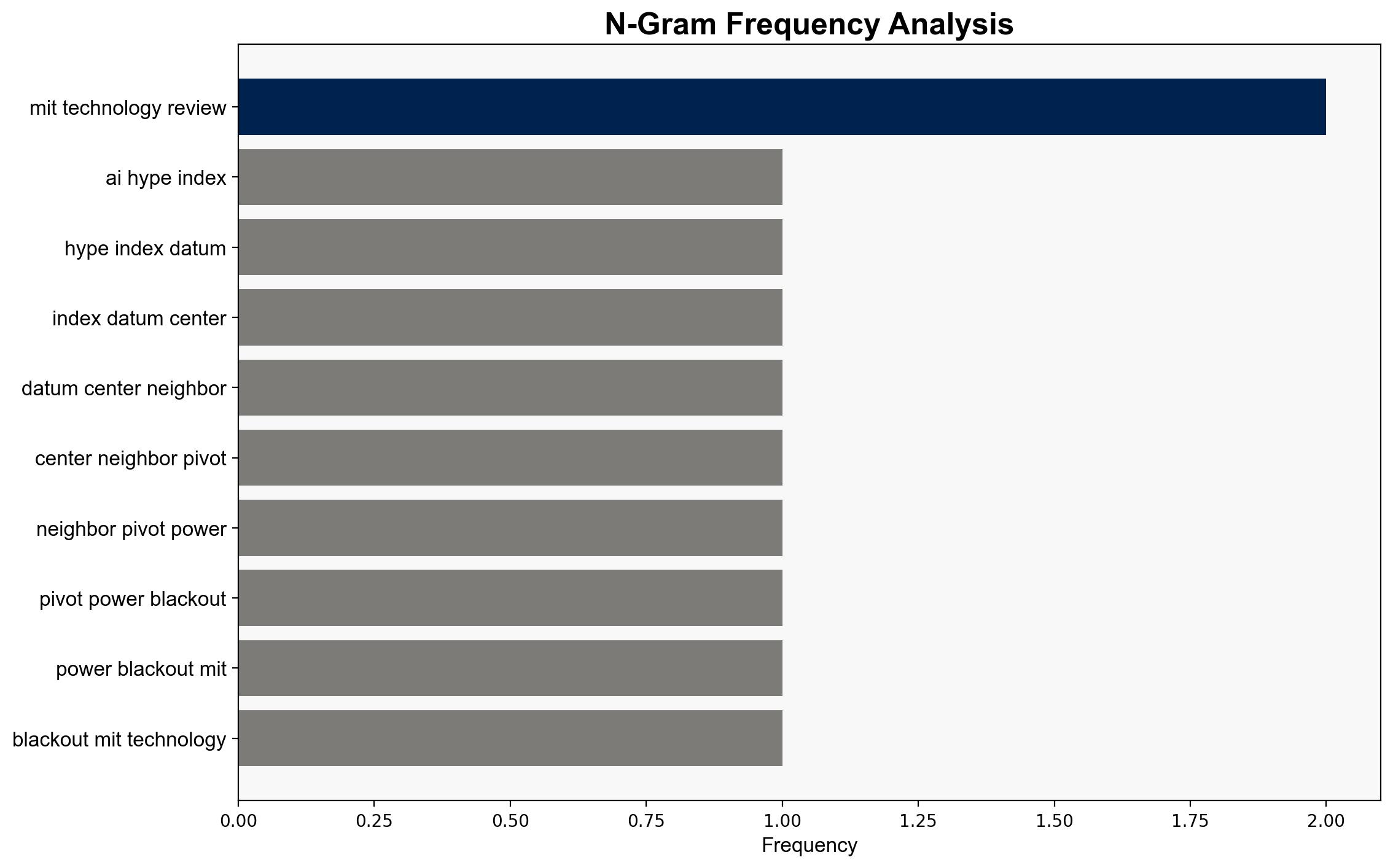The AI Hype Index Data centers neighbors are pivoting to power blackouts – MIT Technology Review
Published on: 2025-10-29
Intelligence Report: The AI Hype Index Data Centers Neighbors are Pivoting to Power Blackouts – MIT Technology Review
1. BLUF (Bottom Line Up Front)
The most supported hypothesis suggests that the rapid expansion of AI infrastructure, particularly data centers, is leading to significant local resource strains, such as power blackouts and water shortages. This hypothesis is supported by the observable increase in AI-related infrastructure and its impact on local communities. Confidence level: Moderate. Recommended action: Implement regulatory measures to ensure sustainable development of AI infrastructure.
2. Competing Hypotheses
1. **Hypothesis A**: The expansion of AI data centers is causing local resource strains, leading to power blackouts and water shortages. This is due to the high energy and water demands of these facilities.
2. **Hypothesis B**: The reported resource strains are exaggerated and are being used as a narrative to critique AI advancements. The actual impact on local resources is minimal, and the issues are more related to existing infrastructure inadequacies.
Using ACH 2.0, Hypothesis A is better supported by the data, as there are documented cases of resource strains in areas with high concentrations of data centers. Hypothesis B lacks substantial evidence and relies on the assumption that existing infrastructure is solely to blame.
3. Key Assumptions and Red Flags
– **Assumptions for Hypothesis A**: Data centers have a significant impact on local resources. AI growth is directly linked to infrastructure expansion.
– **Assumptions for Hypothesis B**: Existing infrastructure issues are the primary cause of resource strains. AI-related narratives are exaggerated.
– **Red Flags**: Potential bias in reporting due to vested interests in either promoting or criticizing AI. Lack of comprehensive data on actual resource consumption by data centers.
4. Implications and Strategic Risks
– **Economic**: Unchecked expansion of AI infrastructure could lead to increased operational costs for local utilities and potential economic strain on communities.
– **Cyber**: Concentration of data centers may increase vulnerability to cyberattacks, potentially disrupting critical services.
– **Geopolitical**: Resource strains could lead to local unrest, affecting regional stability and international relations if not managed properly.
– **Psychological**: Public perception of AI could be negatively impacted, leading to resistance against technological advancements.
5. Recommendations and Outlook
- Implement regulatory frameworks to ensure sustainable development of AI infrastructure, focusing on energy efficiency and resource management.
- Encourage investment in renewable energy sources to power data centers, reducing their environmental impact.
- Best-case scenario: Sustainable practices are adopted, leading to balanced growth and minimal local impact.
- Worst-case scenario: Continued resource strains lead to significant local unrest and economic instability.
- Most likely scenario: Gradual implementation of regulatory measures mitigates most adverse effects, but challenges persist.
6. Key Individuals and Entities
– OpenAI
– MIT Technology Review
– Local utility providers in affected regions
7. Thematic Tags
national security threats, cybersecurity, regional focus, AI infrastructure, resource management





